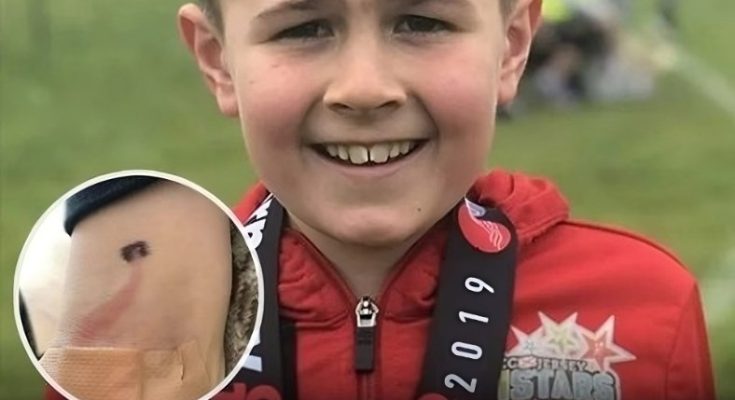Sepsis is a silent killer, responsible for over 1 million hospitalizations in the USA each year and ranking among the top 10 deadliest diseases in the country. Recently, a UK mother’s harrowing experience has shed light on the importance of recognizing the early warning signs of this life-threatening condition. In this comprehensive article, we’ll delve into the intricacies of sepsis, explore the UK mom’s close call, and equip you with the knowledge to potentially save a life.

What is Sepsis?
Sepsis is a serious and potentially fatal medical condition that arises when the body’s immune system overreacts to an infection. Instead of targeting the specific infection, the body releases chemicals that trigger widespread inflammation, affecting multiple organ systems. Sepsis progresses through three main stages:
1. Sepsis: An infection enters the bloodstream, triggering a body-wide inflammatory response.
2. Severe Sepsis: The infection starts to affect the function of vital organs.
3. Septic Shock: Blood pressure drops dramatically, leading to respiratory failure, heart failure, stroke, organ failure, and potentially, death.
While anyone can develop sepsis, certain individuals are particularly vulnerable, including pregnant women, older adults, young children, and those with compromised immune systems. Alarmingly, sepsis can even develop while a person is being treated for a separate issue in a hospital setting, where the weakened state of the body and potential exposure to infections can increase the risk.
UK Mom’s Crucial Lesson on Sepsis
In a heartbreaking Facebook post that went viral, a UK mother shared her family’s close encounter with sepsis. It all started with a seemingly minor incident at the zoo, where her young child took a tumble and sustained some wounds. Despite the wounds not appearing infected initially, the mother’s vigilance and keen observation paid off.
“A week or so ago, the littlest fell over at the zoo,” she began her post. “He took quite a bashing, but once we got home, I cleaned him up. The wounds didn’t look infected- they’d got bigger so I was concerned but they weren’t gunky etc.”
It was on their way to the beach the following day that the mother noticed something concerning. “Yesterday on our way to the beach he showed me his hand. I wasn’t happy as I noticed red tracking down his vein. I then checked his elbow – the same.”
Recognizing the warning signs of potential blood poisoning or sepsis, the mother immediately sought medical attention. “When the [urgent care] doctor saw it, he commended me on [recognizing] it and getting down ASAP. This is blood poisoning / sepsis. It isn’t something you can ‘leave’ until Monday when the doctors are back in the office.”
The mother’s swift action and keen observation undoubtedly played a crucial role in catching the early stages of sepsis and preventing a potentially devastating outcome. In her closing remarks, she emphasized the importance of acting quickly when spotting the telltale red line running along a vein, urging others to seek immediate medical attention in such situations.
Early Warning Signs of Sepsis

The UK mom’s experience highlights the importance of recognizing the early warning signs of sepsis. These include:
- Fever above 101ºF (38ºC) or temperature below 96.8ºF (36ºC)
- Heart rate higher than 90 beats per minute
- Breathing rate higher than 20 breaths per minute
- Signs of an infection
As the condition progresses, the signs of severe sepsis may become evident, including:
- Patches of discolored skin
- Decreased urination
- Changes in cognition
- Low platelet count
- Breathing problems
- Abnormal heart functions
- Shivering, chills
- Unconsciousness
- Extreme weakness
The final stage, septic shock, is characterized by extremely low blood pressure along with the symptoms of severe sepsis.
Importance of Timely Intervention
The UK mom’s experience underscores the crucial importance of timely intervention in cases of suspected sepsis. By recognizing the early warning signs, such as the red line tracking along the vein, and seeking immediate medical attention, she was able to prevent her child’s condition from escalating into a life-threatening situation.
Sepsis is a time-sensitive medical emergency, and the longer it goes untreated, the more severe the consequences can be. Prompt diagnosis and treatment are crucial to improving the chances of survival and minimizing the potential for long-term complications.
Conclusion
The UK mother’s harrowing encounter with sepsis serves as a poignant reminder of the importance of being vigilant and recognizing the early warning signs of this potentially deadly condition. By sharing her story, she has not only raised awareness but also empowered others to act quickly and decisively in the face of a suspected sepsis case.
As we’ve explored in this comprehensive article, sepsis is a serious and complex medical condition that requires immediate attention. By understanding the stages of sepsis, the vulnerable populations, and the early warning signs, we can all play a role in potentially saving lives and preventing the devastating consequences of this silent killer.



